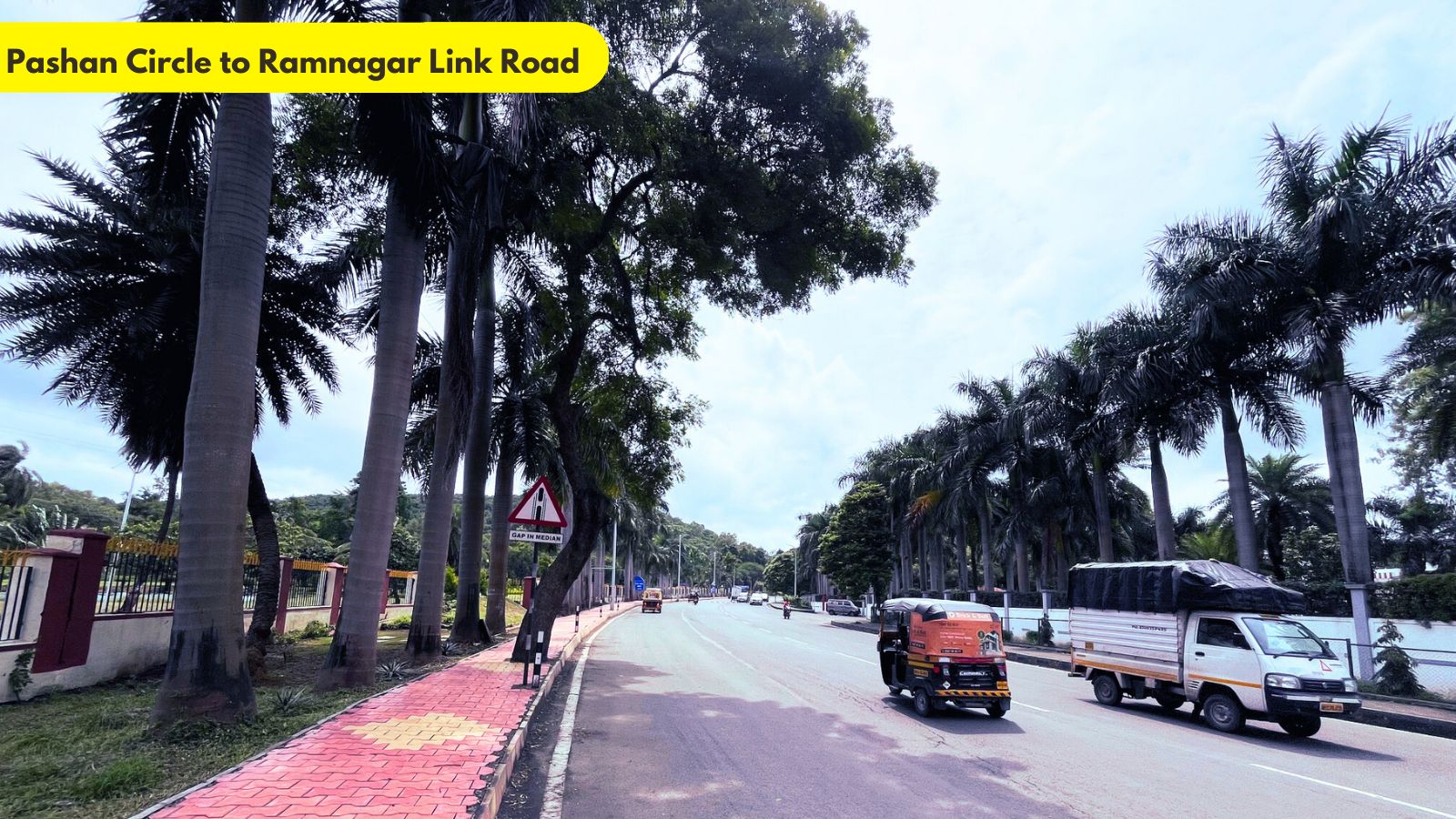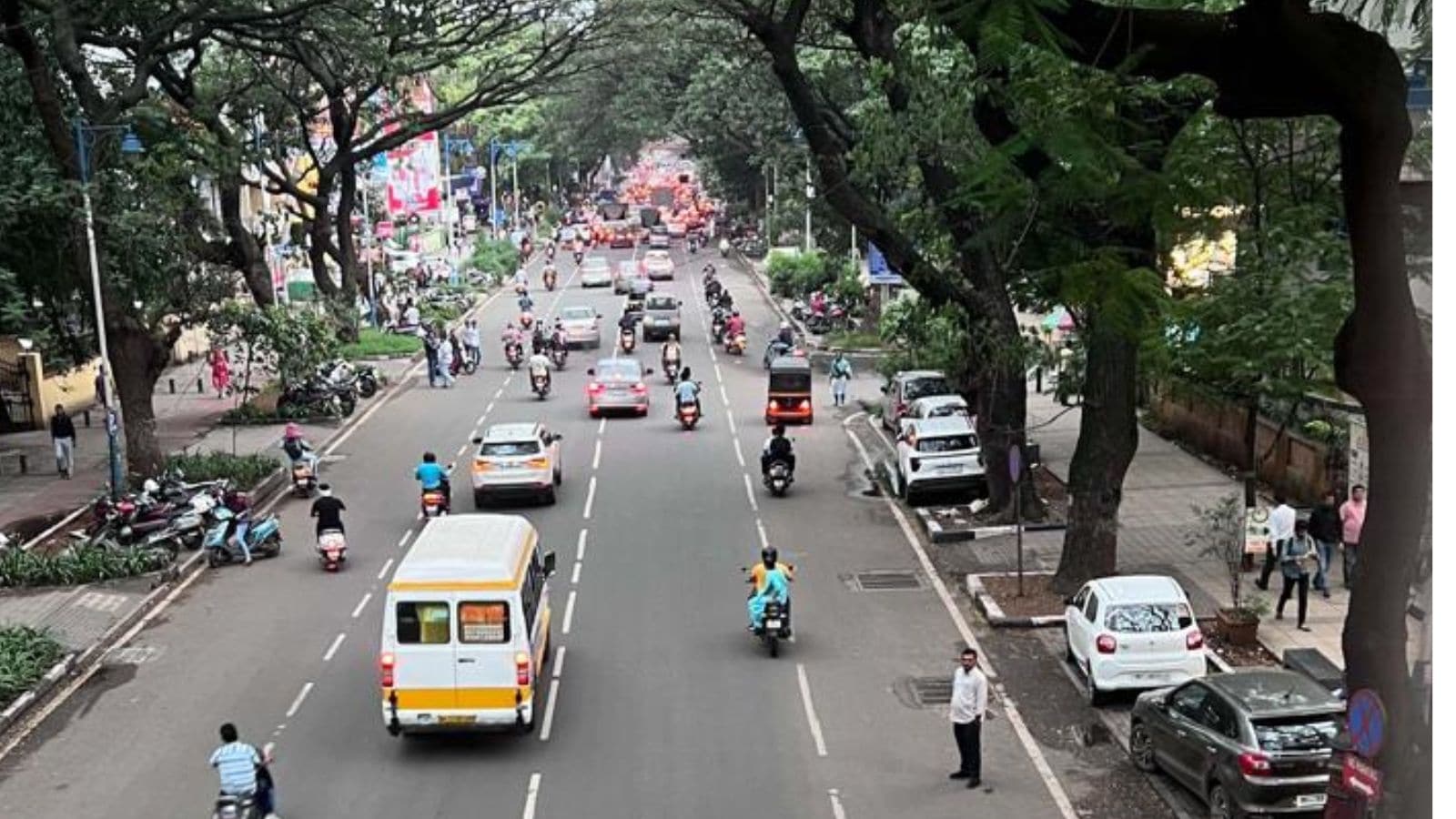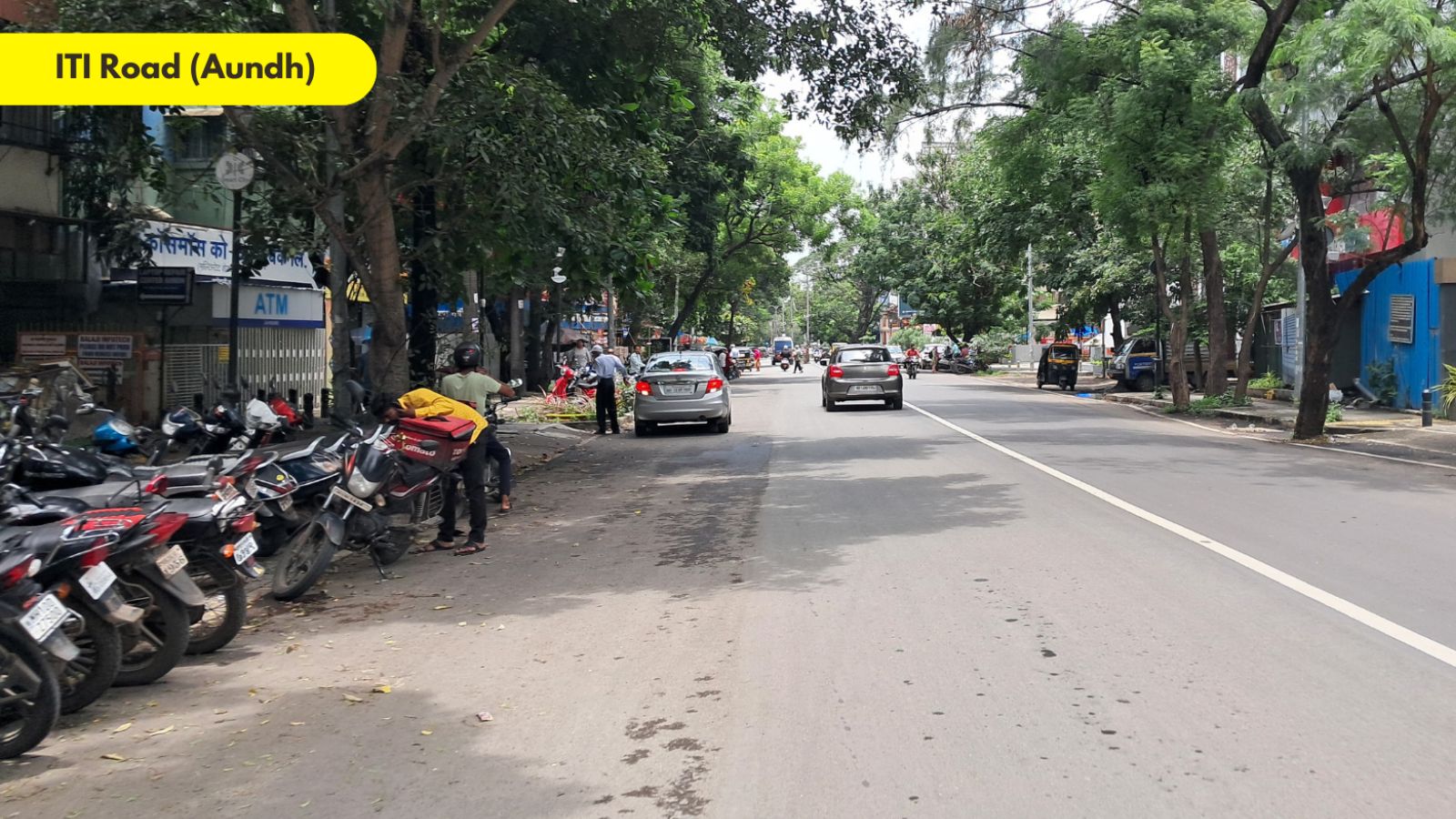Click here to join Express Pune WhatsApp channel and get a curated list of our stories
Guess what we found in Pune? Some roads without potholes! Here’s how
These Pune roads, including one that was built in the 1960s, are largely free of potholes. Here’s how they were built and what seems to have worked in their favour
 The company that developed this road had put it in writing that it would not develop any problem for 10 years “or they would repair it for free”. (Express Photo by Arul Horizon)
The company that developed this road had put it in writing that it would not develop any problem for 10 years “or they would repair it for free”. (Express Photo by Arul Horizon)Gone are the days when roads with potholes made news. Today, roads without potholes are the real headline-grabbers. Team IE set out in different directions to find a few of these in Pune, and after days of scouring the city, we came across a few roads that, believe it or not, did not have any potholes for at least a 1 km stretch.
So here are the most newsworthy roads of Pune, roads that have a striking feature that hundreds of their counterparts do not – no potholes. We asked the people who built these roads how they did it and discovered it was not rocket science, just pure and straightforward adherence to road construction principles.
Pashan Circle to Ramnagar Highway Link Road
Since when: 1960s
How they did it: Quality material, constant monitoring, set as per road engineering standards
Neatly maintained footpaths on both sides, well-kept channels for the passage of water along the roads, proper signages, and above all, not a single pothole. Though it sounds unlikely, this is the description of a road in Pune, a city otherwise plagued with pothole-ridden roads.
The 1.8 km stretch from Pashan Circle to Ramnagar Highway Link Road on the Pashan NDA Road, which has been constructed by the Military Engineering Services (MES), stands out as a welcome exception. The stretch connects the Armament Estate which houses various Defence Research and Development Organisation (DRDO) facilities in Pashan to the Ramnagar area of Bavdhan.
A contractor who was involved in the civil engineering work of the road in the past said, “This road has been there since around 1960 when the DRDO facilities in the area including the Armament Research and Development Establishment (ARDE) and High Energy Materials Research Laboratory (HEMRL) were established. The road has been under the jurisdiction of the MES since then. It had a footpath on just one side, and in 2016, the footpath on the other side was also constructed.”
 Pashan Circle to Ramnagar Link Road. (Express photo by Sushant Kulkarni)
Pashan Circle to Ramnagar Link Road. (Express photo by Sushant Kulkarni)
“This is arguably one of the best-maintained roads in Pune, primarily because it is under the defence jurisdiction. The pipelines, cable passages etc were planned in advance and since not much new development happens in the defence area, repeated digging and excavation of the road is not needed, which is done many times in the civil domain,” the contractor added.
An MES officer said, “Continuous monitoring of the road’s condition and continuously undertaking minor and major repairs is the key to a well-maintained road. But, most important is quality assurance for the material that is used. This road was originally constructed as per the set standards of road engineering. The layers, namely the sub-base, water-bound macadam, bituminous macadam, semi-dense asphaltic concrete and seal carpet coating, are of adequate thickness. The thickness of each layer has been calculated based on the soil type and quality, weather conditions and traffic volume.”
The contractor said, “MES has better quality control, budget allocation and project management practices in addition to maintenance and monitoring and feedback from the corresponding defence formation. This always results in better quality of roads in the defence domains.”
Jangli Maharaj Road
Since when: 1973
How they did it: Quality checks, adequate drainage system, designed with future traffic in mind
In 1973, Pune experienced such heavy rains that large parts of the city were inundated and potholes on the roads posed threats to people’s lives. Shrikant Shirole was a 21-year-old corporator of Pune Municipal Corporation (PMC) at the time. Comparing the state of roads in Pune and Mumbai after similar rainfall, he questioned why “things were so grim in Pune but not in Mumbai”.
It turned out that Mumbai had a new technology called Hot Mix Plant. The British company that was operating Hot Mix Plants was called Recondo, operated by two Parsi brothers. Shirole, who was the chairman of the PMC Standing Committee, met the brothers on his next visit to Mumbai. The committee awarded the work for redoing one of the pothole-ridden stretches, the Jangli Maharaj Road (JM Road), directly to Recondo, without calling for tenders – a controversial move but one that paid off.
 Jangli Maharaj Road. (Express Photo)
Jangli Maharaj Road. (Express Photo)
Shirole recalls that Recondo put it in writing that JM Road would not develop any problem for 10 years “or they would repair it for free”. “We are facing problems of flooding roads at present in Pune due to a lack of willpower at PMC,” Shirole told The Indian Express.
Though Recondo got the contract, the sub-contractors were Pune-based Mohanlal Mathrani. Chandan Mathrani, Mohanlal’s son, says that potholes happen, mainly, if there are inadequate drainage systems for water to flow. “Wherever the water gets stagnated on the roads for hours together, you will find potholes. As soon as the rain comes, the water should be allowed to flow. The road must also be designed according to traffic conditions. Just giving a road a layer of asphalt will not help. There must be a system for pipes in which electric cables and so on can be put so that the road does not need to be excavated every time there is electrical work,” says Mathrani.
“JM Road was done with proper thickness. Right from the beginning, it was done properly from the base with bitumen. What is very good is that the road was designed with the future in mind as they, clearly, took into consideration the traffic that would flow into JM Road in the years ahead,” he added.
The company returned to work on the road in 2013-2014, asphalting it and the footpath. The company also worked on asphalting the road at Sutarwadi to Sus in 2009-2010, which is another good stretch in the city, and was responsible for asphalting at Aundh-ITI Road in 2010-2011 as well. “If a road is made with proper quality checks, drainage system and design for the traffic that the road is taking and is expected to take in future, and a slope is maintained, there should not be an issue,” Mathrani said.
Amar Shinde, Superintending Engineer, PMC, said that JM road has survived for years without issues of potholes and the credit for it was the complete development. “It is decades old and was developed completely as per plan with storm water drains and sufficient gradient due to available topography. This kept the road free of potholes despite being a tar road as rainwater drains fast,” he said.
Pune university to Bremen Chowk Road, ITI Road
Since when: 1999
How they did it: Developed at one go, sufficient gradient, effective storm water drains
The Ganeshkhind Road stretch from Bremen Chowk to SPPU Square is among the best roads in Pune. Not only is it wide with usable cycle tracks, but the concrete road is also almost sans potholes.
Amar Shinde, Superintending Engineering, PMC, gives the credit of this well-maintained road to the availability of width and gradient. “This road was constructed around 25 years ago,” said Shinde. “It is a concrete road and was developed in one go by completely sticking to the plan which included storm water drains. Due to the availability of stormwater drains, the water drains easily. Since sufficient gradient was available, the drainage system is very effective,” said Shinde.
 Ganeshkhind Road. (Express Photo)
Ganeshkhind Road. (Express Photo)
He said that there was opposition to the concretisation of roads in Pune but this road proves the utility of such roads. “These roads don’t absorb water, so water flows away and the damage to the road is avoided,” said Shinde.
The ITI Road, which connects Baner Road with DP Road in Aundh, is also among the best-maintained roads. The road – all of 1.16 km – is wide enough and now has only a couple of small potholes.
 ITI road. (Express Photo)
ITI road. (Express Photo)
Dilip Vetal, an autorickshaw driver, was full of praise for the road. “This one does not have any potholes. I drive across the city and the traffic is really bad – especially in the old city areas – because of the potholes. The Ganeshkhind Road from Shivajinagar to University is also very bad due to the ongoing work and bad potholes. This road is quite nice and is well maintained,” said Vetal.
Shinde said that the current ITI Road was laid around 15 years ago when it was also widened. “The road has a good gradient and has functional stormwater (drainage) hence it has received very little damage,” said Shinde.
If roads are constructed as per plan in one go, there are no problems for long, he said. Most Pune roads suffer as they are developed in patches due to limited land available for widening as per plan, he added.
Click here to join Express Pune WhatsApp channel and get a curated list of our stories







